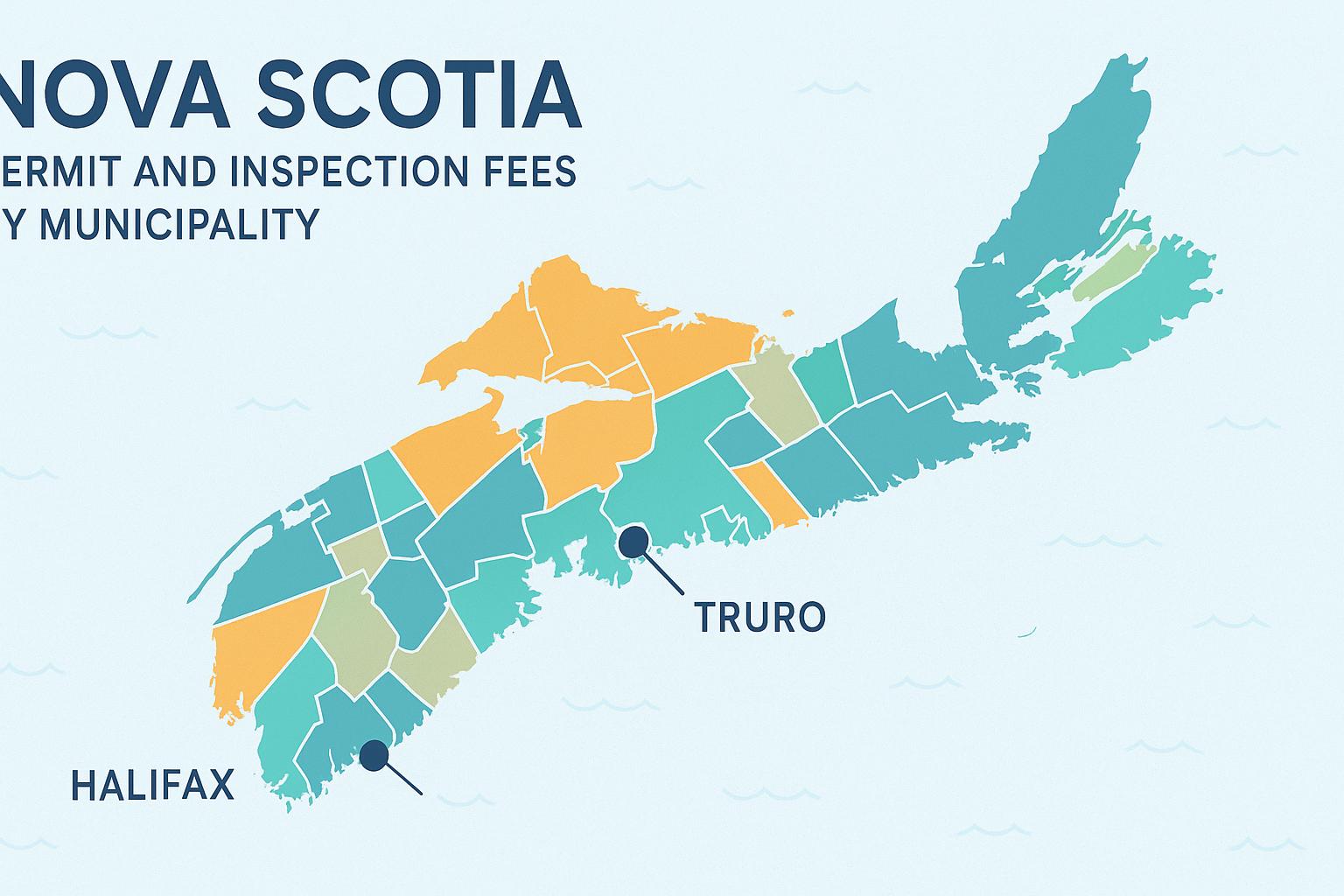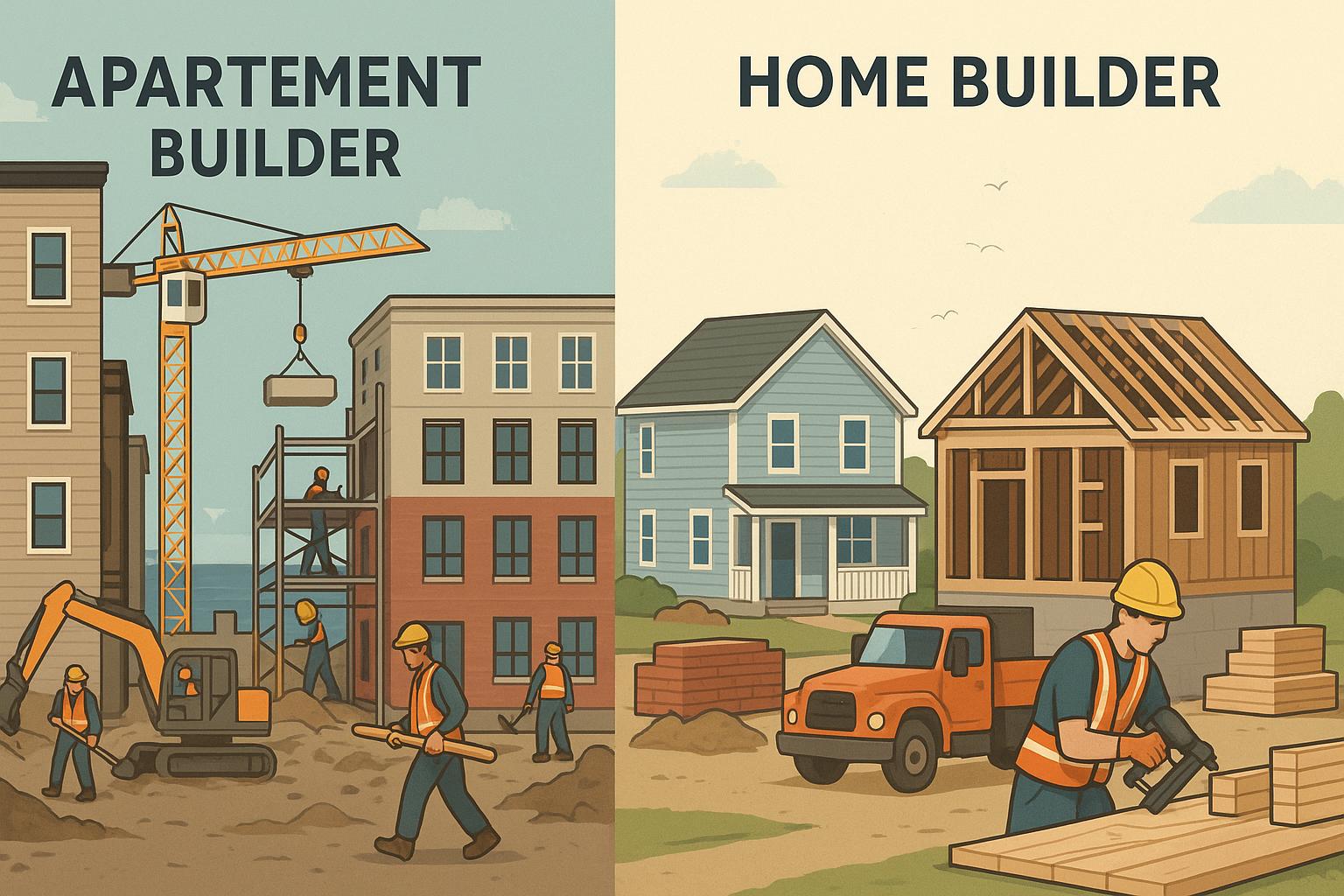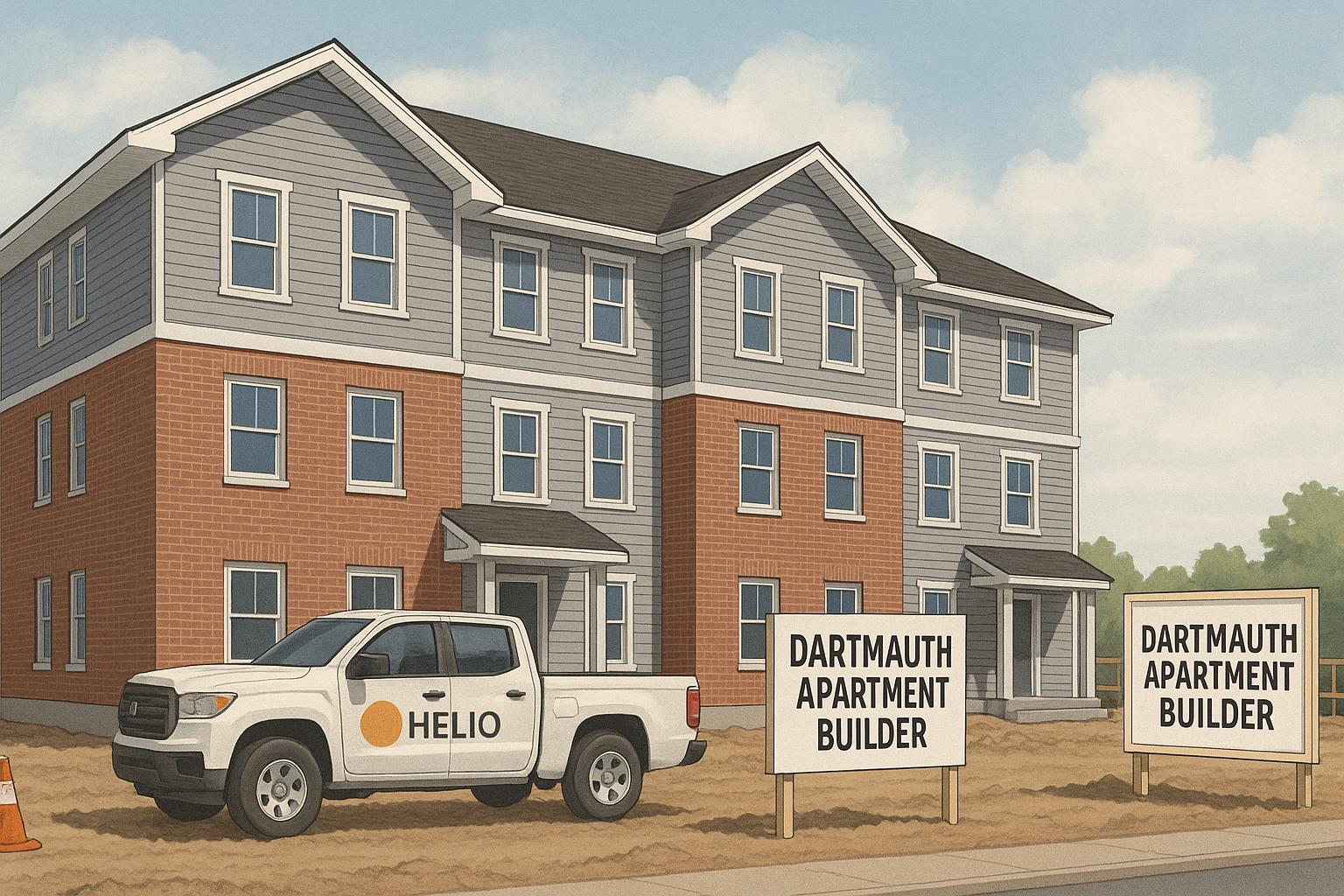Looking to invest in rental properties in Nova Scotia? The Annapolis Valley offers a mix of low building costs, steady rental demand, and attractive financing options, making it a prime location for property development. Here's why:
- Affordable Construction: Building costs in the Valley are significantly lower than in Halifax, with options starting at C$160,000 per unit.
- Strong Rental Market: Monthly rents for one-bedroom units range from C$1,025–C$1,850, while two-bedroom units fetch C$1,595–C$2,150.
- Diverse Tenant Base: Demand comes from university staff, seasonal workers, and tourists, ensuring year-round occupancy.
- Favourable Financing: The CMHC MLI Select program offers up to 95% financing with long repayment terms, boosting cash flow.
- Integrated Design-Build Approach: Simplifies construction, reduces delays, and ensures fixed costs, with projects completed in as little as six months.
Real Estate Investing in Nova Scotia | Rent Control, Market Growth & Nova Scotia Landlord Community
Rent Space in Annapolis Valley
The rent scene in the Annapolis Valley fits many, giving chances for both stable all-year cash and money from the season rush. By knowing the special needs of these renter groups, home owners can choose better how to set up their spaces and lease plans.
Types of Renters
Many kinds of people rent in the Annapolis Valley. Some tie to local schools or town setups, needing places to live for a long time. Others, working in farms or the big wine field, want lease terms that can change. Also, the travel and host game brings in folks who often look for short or easy-to-change leases.
Season and All-Year Need
The need for rent changes with the times of year. Farms and travel make high demand at certain times, while long-time locals keep places full and steady all year. Owners who see these shifts can tweak their lease terms and how they shape their spaces to meet both the high times and the steady needs of all-year renters.
These points are key for making plans for money and shaping rent homes to fit right with what is special about the Annapolis Valley.
Building and Earning in the Valley
Putting up rentals in the Annapolis Valley gives owners a sweet mix of low build costs, steady rent needs, and good loan choices.
Build Costs vs. Other Places
Build costs in the Annapolis Valley are way lower than in Halifax and other big towns. For example, costs to build in Halifax are often above C$200,000 each place, while the Valley enjoys lower land and work costs, which cuts these costs a lot.
Helio Urban Development shines by setting firm prices at C$160,000 per spot, dodging the 30–60% extra costs often seen with less tight teams. For those wanting to use loans well, CMHC MLI Select–fit build is there at C$200,000 per spot. While this route costs more at first, the loan perks can boost cash flow and total money made.
These cost wins help to raise rent income chances and money made from them.
Likely Rent Income and Earnings
Rent rates in the Valley keep up well, with two-room spots for C$1,595–C$2,150/month and one-room ones for C$1,025–C$1,850/month. These rates make for yearly earnings between 12–20%. For instance, Riverstone Residences in Elmsdale gets C$2,150 each month for two-room spots, while top places in Kentville get C$1,595 to C$1,695 a month[1][3].
Spots with fresh looks and save-energy features often get more rent. At Riverstone Residences, one-room spots hit C$1,850/month[1].
To give a picture, a spot renting for C$2,000 a month with a C$200,000 build shows a 12% yearly rent-to-value rate, marking it a strong money choice. Spots that hit or beat the 1% a month rule likely do very well[2].
Running costs of C$4,500–C$5,400 per spot against yearly total incomes of C$23,400–C$25,800 end in net margins of about 30.8%[4]. Rising rent rates boost these earnings, with managers lifting rents by at least 31% since 2010, including a jump of over 24% between 2021 and 2022[4].
These good gains fit well with loan tools like CMHC's MLI Select program, which can lift investment results more.
Gains from CMHC MLI Select Program
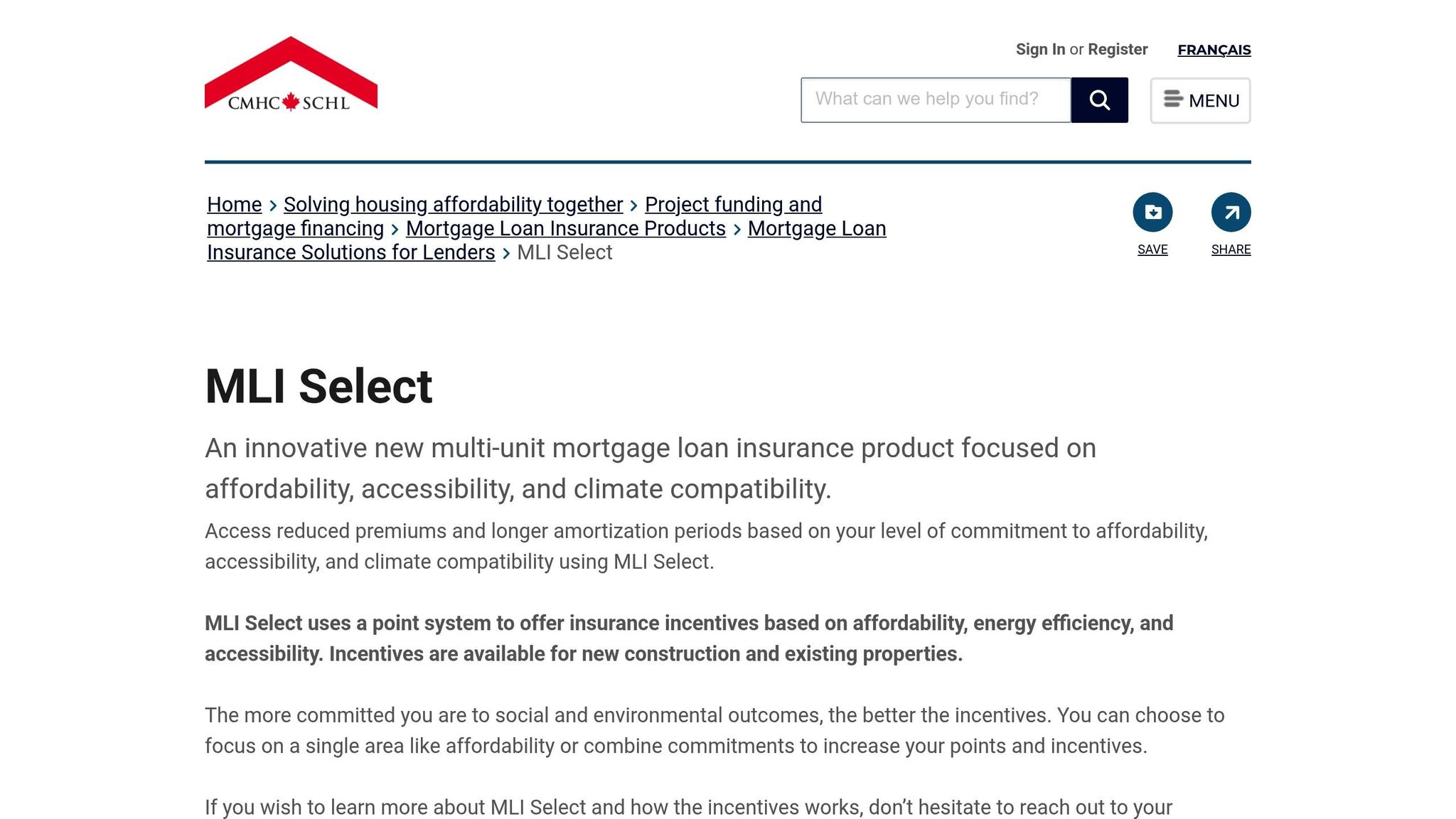
The CMHC MLI Select program backs up the Valley's cost wins by putting out great loan choices for multi-spot builds. This federal program gives loan cover for properties with five or more spots, letting you finance up to 95% with just a 5% down payment[5].
To qualify, you must get at least 50 points in the program’s score system, which likes promises to low cost, save-energy, and easy access[6]. Since its launch in March 2022, changing MLI Flex, the program has been well-used, with multi-spot loan cover up by 28.7% over the past year[7].
The loan power from MLI Select is big. While usual loans often give a 5:1 loan power rate, MLI Select can boost this to 20:1. Also, payback times of up to 50 years cut down monthly debt bills, lifting cash flow from the start.
For example, a project with four units, each costing C$200,000 (making it C$800,000 in total), only needs a C$40,000 down payment with MLI Select. This way, you keep C$160,000 to use again, compared to the C$200,000 down payment usually needed with regular 25% financing.
In 2024, CMHC paid for 283,000 homes through its big unit plans, proving this program works well and it's big. As the only one that gives loan insurance for big homes in Canada, CMHC gives unmatched sureness for home owners.
This program is great for Annapolis Valley home owners. The area’s small build costs fit well with MLI Select's low-cost rules, and the need for homes makes sure places are filled. By teaming up with good builders, home owners can use MLI Select well in their plans, leading to better money results.
sbb-itb-16b8a48
Making and Planning Buildings
To make a building where many people want to live, you have to make good design choices first. Focusing on using less power and adding nice touches, owners can draw in many renters and also cut down on costs. This is extra important during the long 6–7 months of needing heat in Nova Scotia [8]. This part of planning connects to earlier talks about saving money and knowing the market.
What Renters Like In Design
Different renters like different things. This means designs have to match their many needs.
For people living in the Annapolis Valley, using less power is key. Things like better insulation, new windows, and heat pumps are in high demand. These changes don't just make bills lower; they also make a place more liked. Michael Thompson from the Nova Scotia Property Investment Group points out this trend:
"Energy efficiency has become a critical factor with the region's rising utility costs, making properties with heat pumps, upgraded insulation, and modern windows significantly more attractive to both tenants and buyers." [8]
On the flip side, pro renters often seek out top-notch touches and tech-smart options. Tough tops in sleek kitchens and fast web access can pull this crowd in a big way.
For homes geared towards tourists, bringing in unique bits can let you ask for higher rents. Things like old-time touches or wine-themed styles hit well in old spots or places with lots of tourists. As Michael Thompson points out:
"Character homes remain a strong niche, particularly in historic areas and tourist destinations, but require specialized knowledge of maintenance requirements and renovation approaches." [8]
Avoiding Construction Problems
Building multi-unit rentals in the Annapolis Valley comes with its fair share of challenges, including cost overruns, delays, and miscommunication when working with multiple contractors. These issues often arise from a lack of coordination and shared accountability, leading to increased expenses and extended timelines.
To address these common pitfalls, many property owners are turning to an integrated design-build approach - a method that simplifies the process and minimizes risks.
Benefits of Integrated Design-Build
The integrated design-build model streamlines construction by handling everything - from the initial design phase to the final build - under one roof. This approach removes the headaches of juggling multiple contractors and offers some key advantages:
- Single accountability: With one company managing the entire project, there’s no room for finger-pointing. Any issues that arise are resolved directly, without the blame-shifting that often happens between separate contractors.
- Fixed pricing: Costs are locked in from the start, protecting property owners from unexpected expenses. This is especially important in traditional projects, where overruns can inflate budgets by 30–60%.
- Guaranteed timelines: Early collaboration and streamlined planning shave months off typical schedules. Instead of waiting 8–18+ months for completion, projects can be delivered in as little as six months, allowing for quicker rental income.
Additionally, daily photo updates keep property owners informed throughout the process, offering transparency and the ability to address potential problems before they escalate.
This unified approach directly tackles the inefficiencies and cost increases often seen in traditional, fragmented construction projects.
How to Choose a Builder
When selecting a builder for your multi-unit rental project, experience and local expertise should take precedence over cost alone. Look for builders with a proven track record in multi-unit construction and a deep understanding of the Annapolis Valley. This ensures they can navigate local challenges such as seasonal weather, permit requirements, and tenant preferences - whether for university staff, agricultural workers, or seasonal visitors.
Here are some tips for choosing the right builder:
- Demand financial transparency: Insist on a detailed, fixed-price contract that outlines exactly what’s included. Avoid cost-plus arrangements, which can leave you vulnerable to unforeseen expenses.
- Check quality assurance: Choose builders who prioritize quality through multiple inspections and independent engineering reviews. This ensures your investment is protected.
- Focus on local expertise: Builders familiar with the area are better equipped to handle its unique demands, from weather conditions to community needs.
By following these steps, you’ll find a partner who delivers a smoother, more predictable construction process.
Case Study: Helio Urban Development's Methods
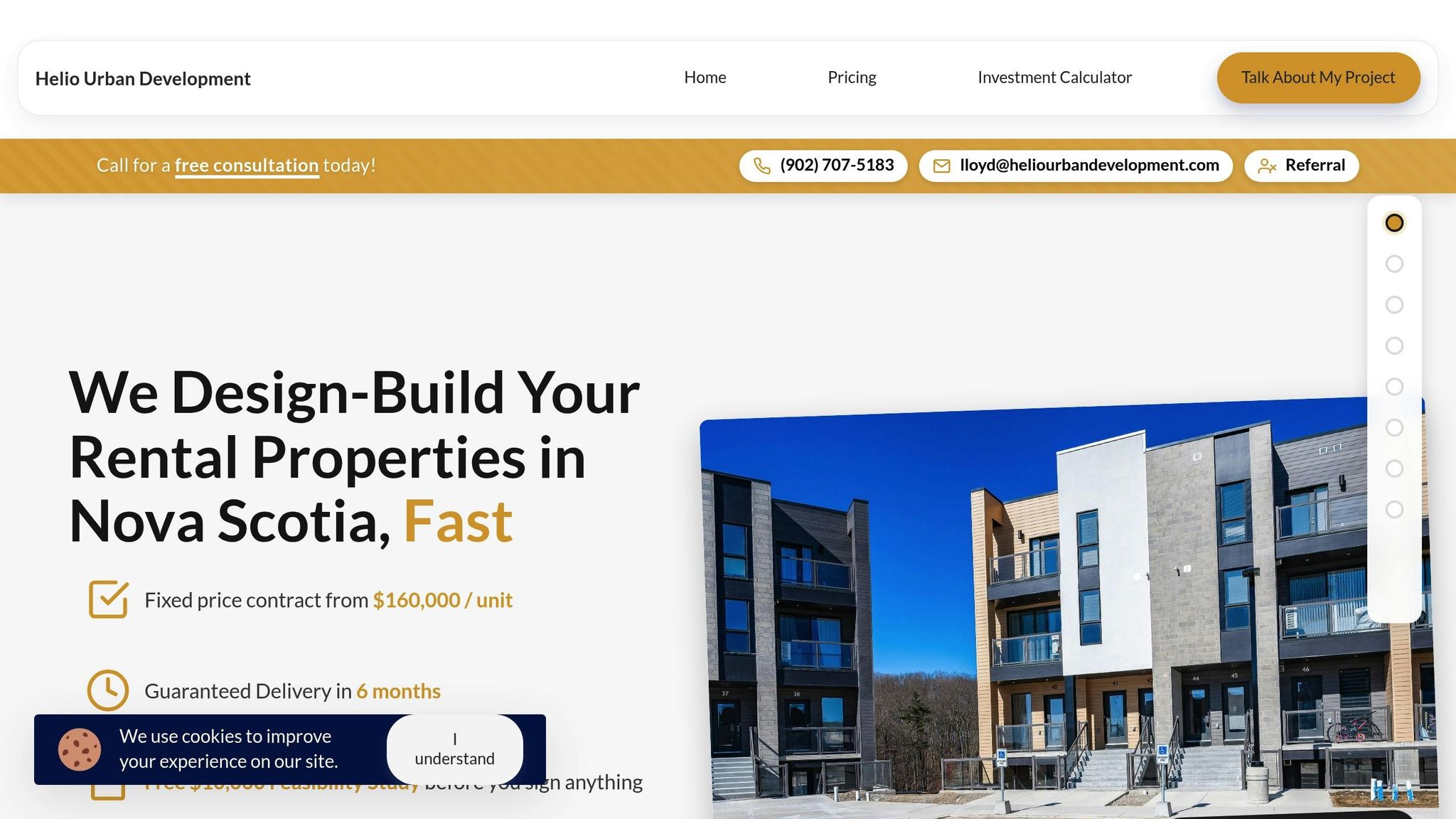
Helio Urban Development is a prime example of how the integrated design-build model can transform potential construction headaches into predictable results. Their fixed-price model, set at $160,000 per unit, comes with a six-month completion guarantee backed by financial penalties for delays - up to $1,000 per day.
For instance, missing a six-month deadline on a fourplex could cost an owner approximately $8,800 per month in lost rental income. Helio’s approach ensures projects stay on track, using advanced scheduling technology to coordinate every phase of construction and minimize delays. Daily photo updates provide further transparency, and their system eliminates an average of $47,000 in coordination waste typically seen in fragmented projects.
Currently, Helio Urban Development is building 31 units across Nova Scotia, with plans for an additional 131 units. Their service area includes property owners within a 90-minute radius of Halifax, offering a reliable and efficient process for multi-unit rental construction.
Building Success in Nova Scotia's Wine Country
The Annapolis Valley offers a golden opportunity for property owners aiming to develop multi-unit rental properties in one of Nova Scotia's most picturesque areas. With steady rental demand from university staff, agricultural workers, and seasonal visitors - and construction costs that are more affordable than in larger urban centres - the Valley presents a promising investment landscape for those who plan carefully and execute efficiently.
To thrive in this market, it's crucial to understand the region's unique dynamics. The tenant base is diverse, ranging from full-time university professors to seasonal workers during the harvest. This diversity calls for flexible property designs that can meet the needs of both long-term and temporary renters. The strong rental yields in the area further highlight its potential for investors.
Favourable financing options, as mentioned earlier, enhance cash flow and make multi-unit developments more attainable. However, to truly maximize these benefits, it's essential to avoid the common pitfalls of fragmented construction processes. When property owners juggle separate architects, engineers, and contractors, projects often face delays and budget overruns, which can quickly eat into expected profits.
An integrated design-build approach is the key to avoiding these issues. By working with local experts who manage the entire process under one roof, property owners can ensure projects stay on track and within budget. This streamlined method provides the predictability needed for successful rental property ventures.
For those considering investments in the Annapolis Valley, the outlook is strong. A combination of rising demand, competitive costs, and reliable local expertise lays the groundwork for building a solid rental portfolio in the heart of Nova Scotia's wine country.
FAQs
What are the benefits of choosing an integrated design-build approach for rental property construction in the Annapolis Valley?
The design-build method streamlines the construction process by offering a single point of accountability. This means fewer delays, less miscommunication, and a lower chance of disputes between contractors, making the entire experience much smoother for property owners.
Another big plus? Cost predictability. With fixed-price contracts, you can avoid surprise expenses and stick to your budget. Plus, the efficient coordination often speeds up project timelines, so you can start earning rental income sooner.
For property owners in the Annapolis Valley, this approach is especially beneficial. The region has unique needs, like housing for seasonal tourists, university staff, or agricultural workers. By combining design and construction, you can create rental properties that cater directly to these markets while sidestepping many of the usual construction headaches.
What benefits does the CMHC MLI Select program offer for building rental properties in Nova Scotia's wine country?
The CMHC MLI Select program offers a range of benefits for property owners aiming to develop rental properties in Nova Scotia's picturesque wine country. With up to 95% loan-to-value, extended amortization periods, and reduced insurance premiums, this program makes financing more affordable and easier to manage.
These perks help reduce initial expenses and enhance cash flow, making it simpler to create multi-unit rentals that meet the increasing demand from university staff, agricultural workers, and seasonal tourists. For anyone looking to tap into the opportunities in the Annapolis Valley, this program provides a smart way to boost returns while addressing the area's rental needs.
What are the best design features to attract a variety of tenants in the Annapolis Valley rental market?
To attract a variety of tenant groups in the Annapolis Valley, it's important to prioritize modern finishes and flexible layouts. These features appeal to families, multigenerational households, and even seasonal visitors. Think about including private entrances, adaptable interiors, and shared communal spaces to make the property more versatile and appealing.
It's also worth designing with privacy in mind while ensuring the architectural style blends seamlessly with the region's charm. These thoughtful design choices can draw in university staff, agricultural workers, and tourists, meeting the distinct rental needs of the area.
Related Blog Posts
- Pre-Designed Homes: A Cost-Benefit Analysis for Investors
- Demographic Tides: Analyzing Youth Migration & Retirement Inflow in Nova Scotia’s Housing Market
- Building in the Annapolis Valley: Guide to Kentville, Wolfville & Surroundings
- Building in Rural vs. Urban Nova Scotia: How Location Impacts Your Budget
